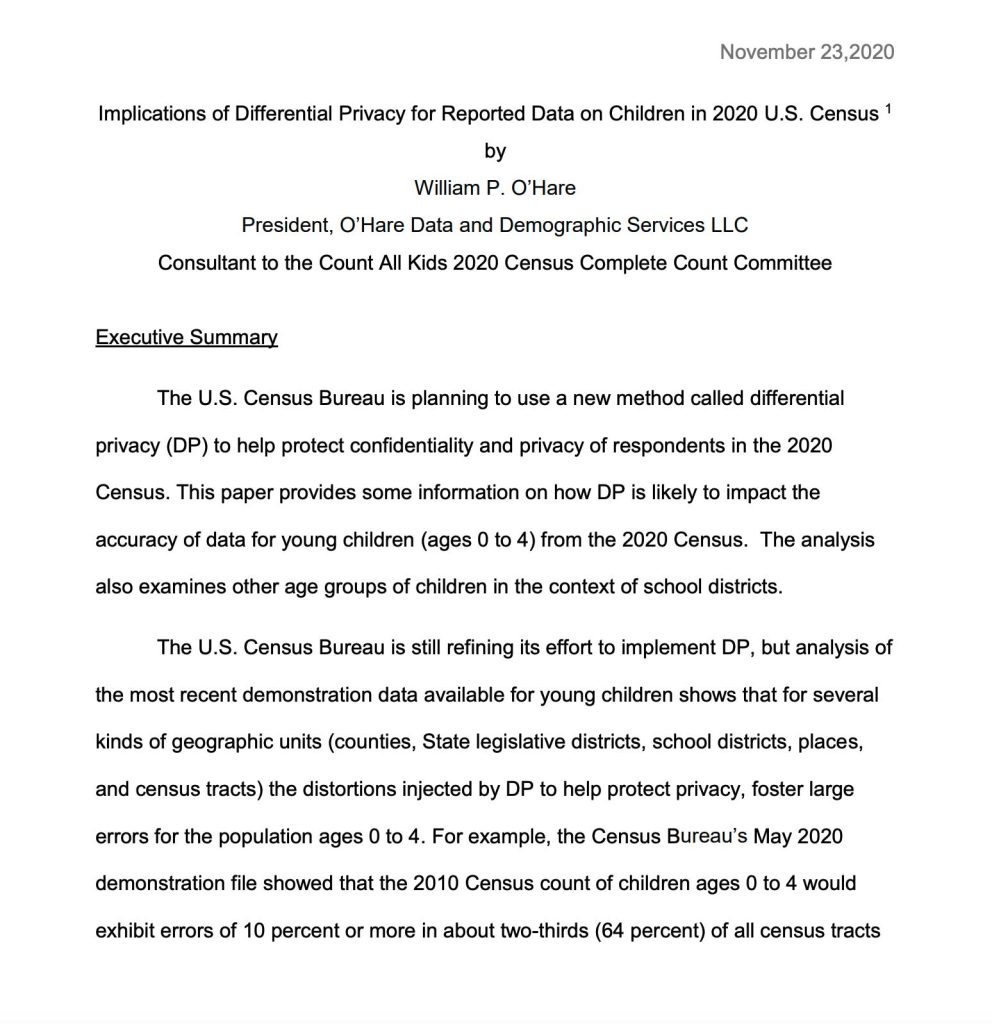Implications of Differential Privacy for Reported Data on Children in the 2020 U.S. Census
by
William P. O’Hare
President, O’Hare Data and Demographic Services LLC
Consultant to the Count All Kids 2020 Census Complete Count Committee
The U.S. Census Bureau is planning to use a new method called differential privacy (DP) to help protect confidentiality and privacy of respondents in the 2020 Census. This paper provides some information on how DP is likely to impact the accuracy of data for young children (ages 0 to 4) from the 2020 Census. The analysis also examines other age groups of children in the context of school districts.
The U.S. Census Bureau is still refining its effort to implement DP, but analysis of the most recent demonstration data available for young children shows that for several kinds of geographic units (counties, State legislative districts, school districts, places, and census tracts) the distortions injected by DP to help protect privacy, foster large errors for the population ages 0 to 4. For example, the Census Bureau’s May 2020 demonstration file showed that the 2010 Census count of children ages 0 to 4 would exhibit errors of 10 percent or more in about two-thirds (64 percent) of all census tracts after the application of DP. And more than a quarter of the tracts (28 percent) had errors of 25 percent or more for children age 0 to 4.[1]
Data for school districts were also examined. For smaller populations (i.e., age 4 or ages 0 to 4) there were substantial errors for school districts. For example, DP methods introduced errors of 10 percent or more for counts of children age 4 in 68 percent of school districts. DP introduced errors of 10 percent or more for counts of children ages 0 to 4 in 44 percent of school districts. For the population ages 5 to 17 and for ages 0 to 17 the error rates are lower.
Smaller geographic areas in terms of population size tend to have higher levels of error injected by DP. This is important because the census is designed to produce data for a lot of small geographic units These errors are likely to cause problems in many use cases such as the amount of state and federal funds received by school districts. For a small school district to get 10 percent less money than it deserves will cause serious problems. It will be difficult for child advocates to support the use of DP in the 2020 Census if it produces errors like those identified in this paper.
The final decision about the use of DP in the 2020 Census is likely to be made in December 2020 or January 2021, and the U.S. Census Bureau is still looking for feedback from data users. Comments can be sent to 2020DAS@census.gov.
[1] In this analysis, errors are the difference between DP-infused 2010 Census data and the 2010 Census data without DP.









